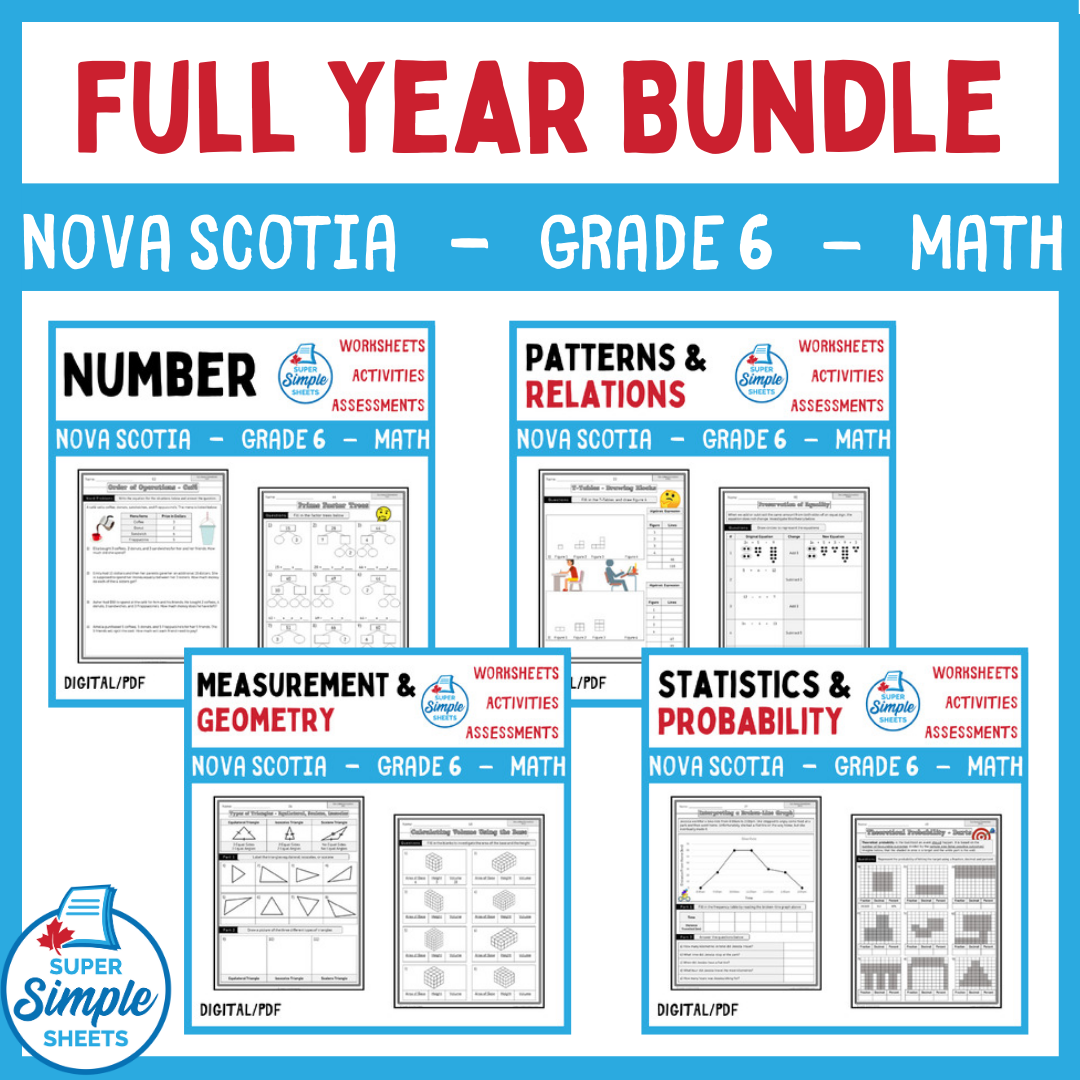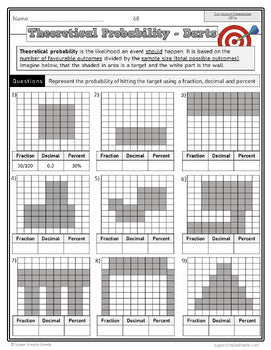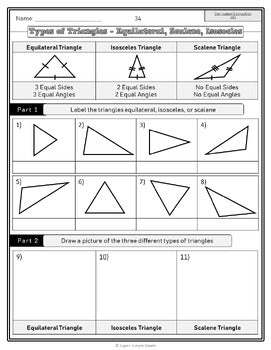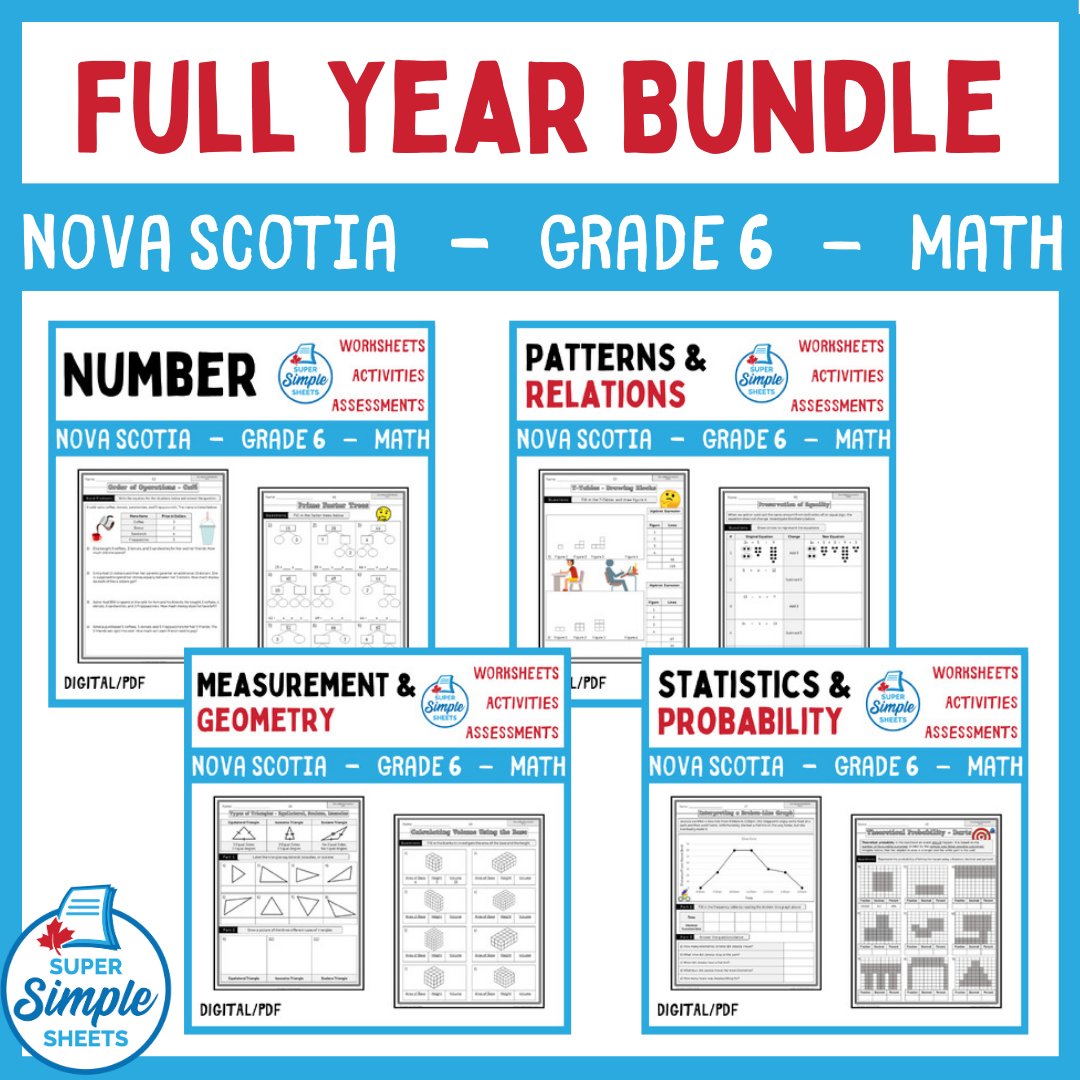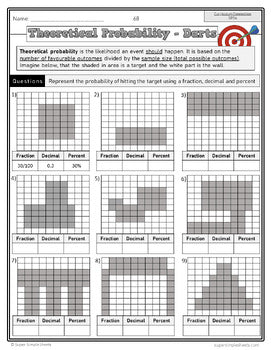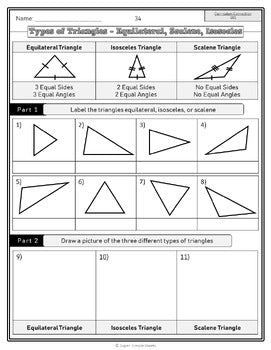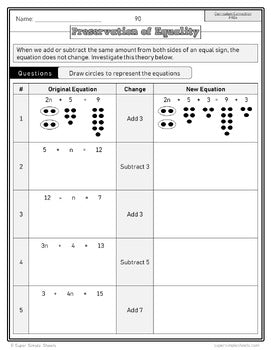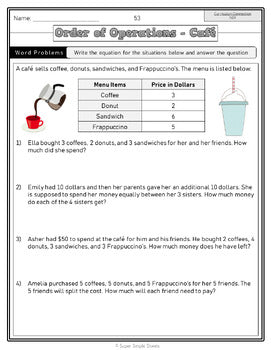Nova Scotia Grade 6 Math - Full Year Bundle
Nova Scotia Grade 6 Math - Full Year Bundle
Interested in a bundle? Shop below instead!
Couldn't load pickup availability
PRODUCT PREVIEW
BOTH DIGITAL AND PDF VERSIONS INCLUDED!
Nova Scotia 2022 Math Curriculum - Grade 6 – This resource covers all outcomes and indicators in the Grade 6 - Nova Scotia 2022 Math Curriculum.
There are 930+ activity sheets for your students to learn and practice the outcomes and indicators in the curriculum. Using this resource will ensure that your students will be learning the Nova Scotia curriculum.
Distance Learning made easy! GOOGLE CLASSROOM VERSION - PDF INCLUDED! This gives you the ability to print worksheets as well as distribute a digital copy of the resource to your students on Google Classroom.
Check out each of the strands below to learn more about the resources included in this bundle.
Number Strand
Concepts that are covered:
- Place value chart – up to billions
- Expanded form and written form – up to billions
- Solving large calculations – billions
- Rounding numbers up to billions and estimating reasonable answers
- Decimals to the millionths
- Rounding decimals
- Solving word problems using decimal numbers to the millionths
- Comparing – up to millionths
- Order of operations – BEDMAS
- Order of operations word problems
- Introduction to multiples
- Introduction to factors
- Prime numbers and composite numbers
- Prime factor trees
- Greatest common factor and lowest common multiple
- Front-end estimation – multiplying and dividing decimal numbers
- Where to put the decimal – solving multiplication and division questions
- Word problems - multiplying and dividing decimals
- Fractions, decimals, percentages
- Word problems – fractions, decimals, percent
- Mental math – calculating percent of whole numbers
- Estimating sales tax
- Word problems – missing percentages
- Writing integers
- Graphing integers on a number line
- Temperature – integers
- Comparing integers
- Adding integers
- Mixed numbers and improper fractions
- Ordering mixed numbers and improper fractions
- Equivalent fractions – using understanding of mixed numbers and improper fractions
- Ratios – in words, ratio, and fractions
- Equivalent ratios – scaling up and down
- Ratio tables
- 4 Unit tests
- Answer pages for all activities
Patterns and Relations
Some of the concepts that are covered:
- Input/output tables – introduction to linear patterns
- Describing pattern rules
- Translating patterns using a graph
- Representing patterns in a table of values
- Write an algebraic expression that represents a pattern
- Complete a table of value using an algebraic expression
- Determine the nth term in a linear pattern
- Recursive vs functional relationships
- Linear patterns – patterns that have a straight line
- Solve word problems involving functional relationships
- Difference between an equation and an expression
- Representing a pattern using an equation and an expression
- Algebraic expressions – terms (coefficient, variable, constant)
- Evaluating algebraic expressions
- Using order of operations when evaluating expressions and equations
- Writing expressions using given coefficients, variables, and constants
- Finding the value of a variable
- Communitive property – addition and subtraction
- Equations pairs: re-writing equations multiple ways
- Determining expressions and equations for solving area and perimeter
- Determining expressions and equations for solving other mathematical situations
- Multiplication, division, subtraction, and addition in expressions and equations
- Finding unknown values in questions involving decimal numbers
- Equivalent forms of an equation
- Preservation of equality – addition, subtraction, multiplication, and division
- Creating equivalent forms of an equation
- 2 Unit Tests
- Answer pages for all activities
Measurement and Geometry
Some of the concepts that are covered:
- Naming angles – acute, obtuse, right, straight, reflex
- Sorting angles
- Angles in triangles and quadrilaterals
- Measuring angles using a protractor
- Constructing angles using a protractor
- Estimating angles using referents
- Angles from 0 to 360 degrees
- Measuring angles up to 360 degrees
- Types of triangles – acute, obtuse and right triangles
- Types of triangles – equilateral, scalene, and isosceles
- Interior angles inside triangles
- Interior angles inside quadrilaterals
- Word problems – calculating the missing interior angle
- Perimeter of regular and irregular polygons
- Perimeter versus area – relationship
- Same area – different perimeter
- Larger perimeter and smaller area
- Converting units – mm, cm, m, km
- Area – using a formula to calculate area of a rectangle
- Volume – calculating volume using the area of the base
- Volume word problems
- Finding the missing value for an area or volume question
- Plotting points on the first quadrant using ordered pairs
- Describing points using ordered pairs
- Plotting vertices of a polygon in the first quadrant
- Performing transformations – reflections, translations, and rotations
- Describing transformations
- Transformations used to create designs
- Tessellations
- Symmetry in tessellations
- Tessellations in Indigenous designs
- 4 Unit Tests
- Answer pages for all activities
Statistics and Probability
Some of the concepts that are covered:
- Difference between discrete and continuous data
- Difference between qualitative and quantitative data
- Difference between primary and secondary data
- Interpreting bar graphs, multiple-bar graphs, and line graphs
- Common attributes of a line graph – title, axes, and intervals
- Can the data be graphed using a line graph?
- Creating an appropriate scale for a graph as well as labels
- Drawing conclusions about different sets of data
- Thinking critically about misleading line graphs
- Creating misleading graphs
- Interpolation versus extrapolation in line graphs
- Reading line graphs and using interpolation and extrapolation to answer questions
- Create survey questions about areas of interest
- Collecting data using databases, questionnaires, experiments, and survey questions
- Create line graphs using data from experiments students performed
- Create a line graph using data provided
- Using a probability line to decide the probability of an event
- Using fractions, decimals, and percent to represent the probability of an event
- The difference between 0 and 1 when describing probability
- What is a sample space?
- Understanding the difference between theoretical and experimental probability
- Performing experimental probability
- 2 Unit Tests
- Answer pages for all activities
This is a comprehensive bundle that will save you hours of planning! It has been tested and found effective in helping students achieve the learning outcomes outlined in the Nova Scotia 2022 curriculum.
Answer pages for all slides/sheets are included!
Share
